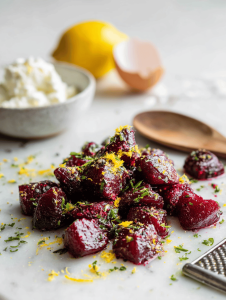I started playing with beet gnocchi after a trip to a farmers’ market. Seeing those deep, blood-red bulbs made me think—why not turn them into something more than just salads? It’s a messy, earthy process, but when you get that first crispy bite, it all feels worth it.
Why I Keep Coming Back to This Gnocchi
The combination of earthy beets and the tender bite of gnocchi reminds me of childhood chaos in my grandma’s kitchen. It’s a dish that invites experimentation—adding spices, herbs, or cheese—making each batch a new story. Plus, it’s surprisingly forgiving, forgiving enough for a rushed weeknight while still feeling special.
Breaking Down the Bloody Beet Gnocchi
- Beets: Deep, earthy flavor with a sweet edge, making the gnocchi vibrant and colorful.
- Ricotta cheese: Adds creaminess and lightness, balancing the earthiness of the beets.
- Egg: Binds the dough, ensuring it holds together during cooking.
- Flour: Provides structure; use just enough to keep the dough workable.
- Salt: Enhances overall flavor, don’t skimp on seasoning.
- Butter or olive oil: Used for crisping the gnocchi, adding richness and shimmer.
- Lemon zest or herbs (optional): Brightens and freshens the earthy base.
Tools and Equipment for Beet Gnocchi
- Oven: Roasts the beets evenly and efficiently.
- Food processor or blender: Purees the beets smoothly for the dough.
- Large mixing bowl: Combines ingredients comfortably.
- Sharp knife: Cuts the dough into gnocchi shape.
- Slotted spoon: Gently lifts gnocchi from boiling water.
- Non-stick skillet or frying pan: Crisps up the gnocchi after boiling.
Crafting the Perfect Bloody Beet Gnocchi: Step-by-Step
Step 1: Preheat your oven to 200°C (390°F).
Step 2: Roast the beets wrapped in foil for about 45 minutes until tender.
Step 3: Peel the beets once cool enough to handle, then mash or puree until smooth.
Step 4: Mix the beet puree with ricotta, egg, and a pinch of salt in a large bowl.
Step 5: Gradually add flour, kneading gently until a soft dough forms, not sticky but pliable.
Step 6: Divide the dough, roll into logs about 2 cm thick, then cut into bite-sized pieces.
Step 7: Bring a large pot of salted water to a boil. Drop the gnocchi in, and cook until they float, about 2-3 minutes.
Step 8: Sauté the cooked gnocchi in a hot pan with butter or olive oil until slightly crispy and caramelized.
Cooking Checkpoints & Tips to Nail the Gnocchi
- Gnocchi float when fully cooked; don’t drain prematurely.
- The dough should be soft but not sticky—add flour if needed.
- Gnocchi should be golden and slightly crispy after pan-frying, not burnt.
- Taste the dough before shaping; it should be mildly seasoned, not bland or overwhelming.
Common Mistakes & How to Fix Them
- Dough feels overly sticky and difficult to handle.? TOO STICKY DOUGH? Add a little more flour gradually.
- Gnocchi disintegrate in boiling water.? GNOCCHI FALL APART? Seal edges well and don’t overcook.
- Gnocchi lack color and crispness.? RATHER PALLID GNOCCHI? Pan-fry longer until edges are golden.
- Beet juice makes dough too wet.? BEETS BLEED TOO MUCH? Roast them thoroughly to reduce moisture.
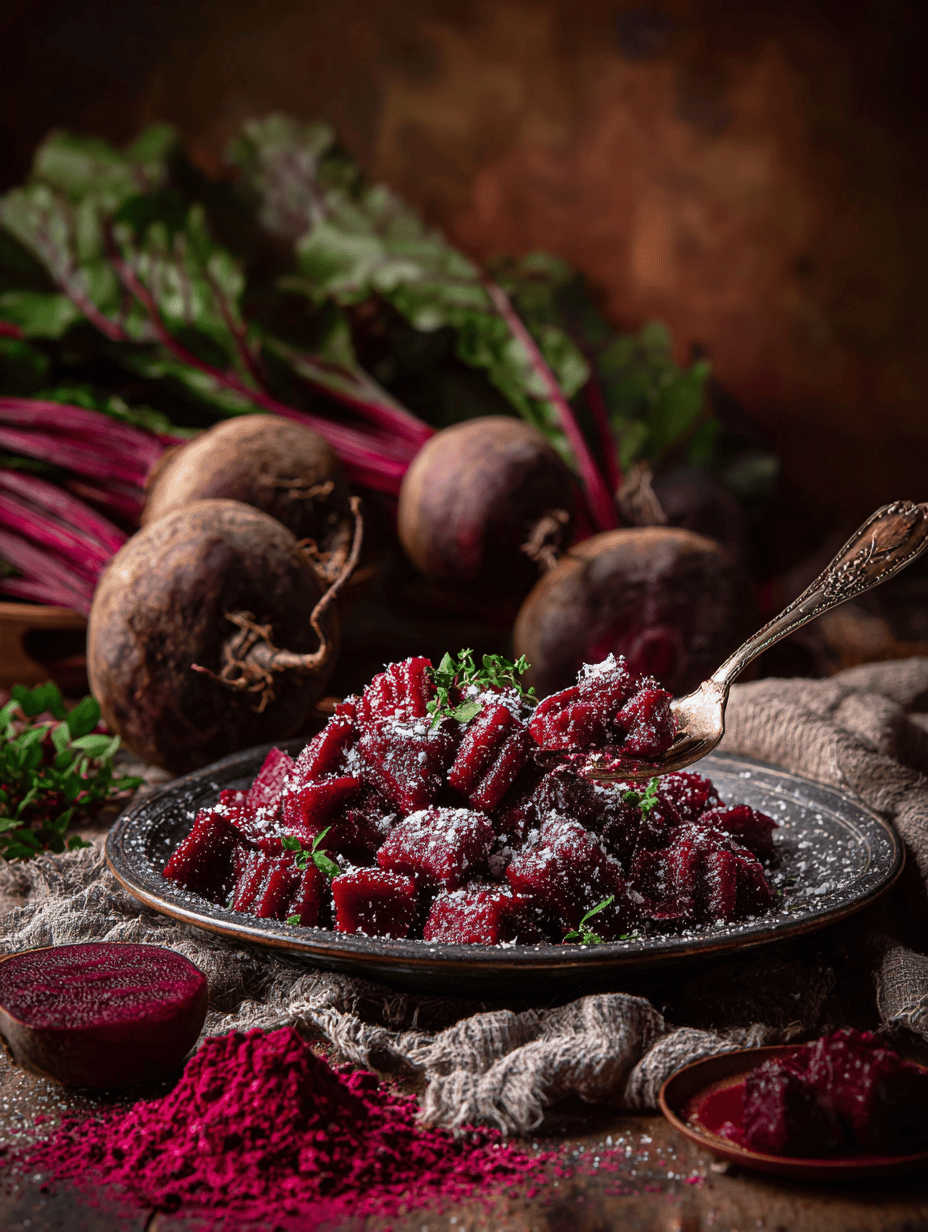
Bloody Beet Gnocchi
Ingredients
Equipment
Method
- Preheat your oven to 200°C (390°F). Wrap the beets in foil and roast for about 45 minutes until they’re tender when pierced with a fork.
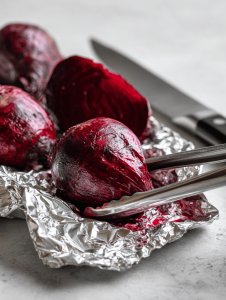
- Once cool enough to handle, peel the beets and cut off the stems. Mash or puree the roasted beets until smooth and vibrant in color.
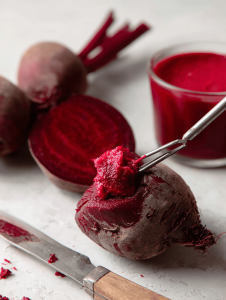
- In a large bowl, combine the beet puree with ricotta cheese, egg, salt, and lemon zest (if using). Mix until well incorporated and the mixture is bright and slightly sticky.
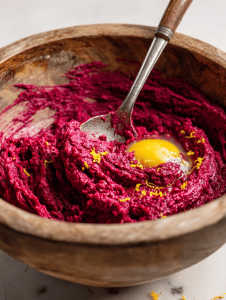
- Gradually add the flour to the mixture, folding in gently until a soft, slightly sticky dough forms. It should be workable but not overly sticky; add more flour if needed.
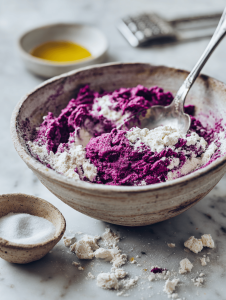
- Divide the dough into four equal parts. Roll each into a log about 2 cm in diameter on a floured surface.
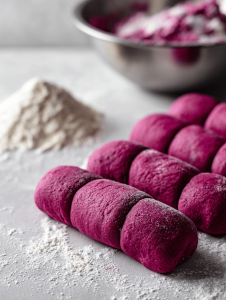
- Cut each log into bite-sized pieces, about 2 cm long. Lightly dust the gnocchi with flour to prevent sticking.
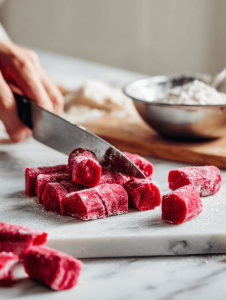
- Bring a large pot of salted water to a gentle boil. Drop the gnocchi in batches, cooking until they float to the surface, about 2-3 minutes.
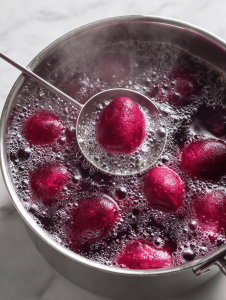
- Using a slotted spoon, carefully lift the cooked gnocchi and set aside.
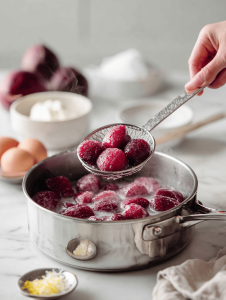
- Heat butter or olive oil in a non-stick skillet over medium heat. Add the cooked gnocchi and cook until they’re golden and crispy around the edges, about 3-4 minutes.
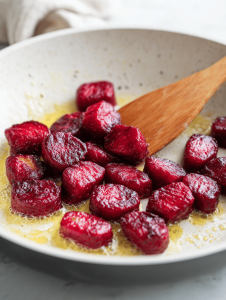
- Serve the crispy beet gnocchi hot, garnished with additional lemon zest or herbs if desired. Enjoy the earthy, tender, and crunchy bites!
